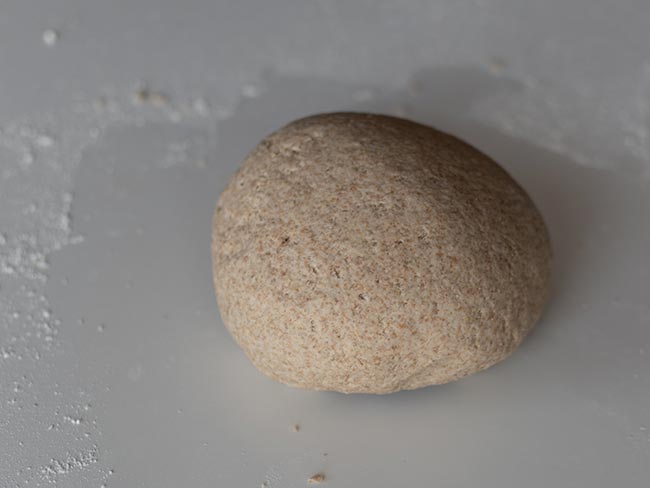Half whole wheat pizza crust
Making a pizza crust as described below was a revelation. It is so much easier than my earlier offering. Some cooks (and surgeons) think that making things complicated is more impressive. Some surgeons use 10 different kinds of sutures to do an operation. I used to use two.
To me, simpler is better. That’s why I really like this new version of pizza crust — plus it’s made with half of what’s called white whole wheat flour. White whole wheat flour is a new product in my world. It’s got the nutrients of regular whole wheat but it looks lighter and behaves more like unbleached flour.
The past pizza crust recipe I offered required many minutes of kneading. This new version is more of a minimalist approach. It’s quick, easy, and results in a crust that crispy and crackly on the outside and fluffy/chewy on the inside. And — it uses your basic food processor and not a fancy mixer with a dough hook.
Servings: 2 12 inch pizzas
Ingredients
- 1 cup bread flour
- 1 cup white whole wheat flour
- 1 heaping teaspoon dry yeast
- 1 1/2 teaspoon salt
- 1 tablespoon olive oil
- 1 cup 110 degree water
Note: Getting the water to the right temperature is always too complicated. I have used a thermometer, wasted probably gallons of water mixing hot and cold, tested the temperature like a baby bottle on the inside of my wrist, etc. It works fine to run the hottest water out of your faucet into a measuring container that was sitting in a drawer—the water cools to the proper temperature.
Directions
- For any pizza recipe, you decide to use, be sure to preheat your oven as hot as it can be short of broiling for at least 30 minutes. I use a pizza stone set on the bottom of the oven for the best results.
- Add the flours, salt, and yeast to a food processor. If you have a dough blade, use it. If not, forget it. Pulse a few times to mix. Add the water and olive oil while the processor is running. In about 15 seconds you will have a moist ball of dough.
- Knead it for a few seconds on a floured work surface.
- Add a little olive oil to a mixing bowl. Coat the ball of dough with the oil. Cover with plastic wrap. Most recipes talk about a warm place without drafts, etc. I live in a 100-year-old Berkeley, CA home. There is no such warm place. I just cover the dough and get a life for the next 1 1/2 hours. By then, the dough will have magically risen to about double its original volume.
- Punch it down and divide it into two balls. Flatten the balls a little and cover them with a kitchen towel. Let them rise again for about 20 minutes.
- This next step may be my best cooking tip of the year. It changed my life. Rather than creating pizzas on a wooden peel covered with either cornmeal or semolina flour in hopes the composed pizza wouldn’t stick when it came time to wrestle the pizza unto the stone, I discovered parchment paper. Press one of the balls of dough into a 12 inch round on a piece of parchment paper crimping the edges like an apple pie.
- Use your favorite, hopefully, healthy and seasonal topping, and slide a wooden pizza peel or a flat baking sheet under the parchment paper. Slide the pizza into the preheated stone. Bake it for 3 to 4 minutes and remove it, half baked.
- Top the other pizza (maybe prawns — wild-caught in the Gulf of Mexico — leeks, tomatoes, feta cheese, and mint) and cook it for a few minutes.
- Remove pizza number two. You can then finish pizza number one followed by pizza number two in short order. This way you can serve your friends and family two different kinds of hot pizzas.
Nutrition information (per serving)
- Serving size: 1/2 of a 12-inch crust
- Calories: 166
- Total fat: 3 g
- Saturated fat: 0 g
- Trans fat: 0 g
- Cholesterol: 0 mg
- Sodium: 583 mg
- Total carbohydrate: 31 g
- Dietary fiber: 3 g
- Protein: 5 g
